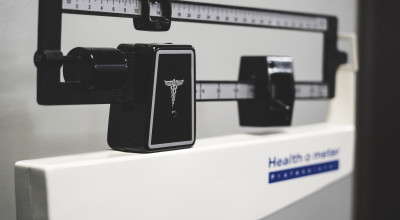Fast Facts About Alcoholism and Use in the United States
October 2nd, 2018
Alcohol is easily the most frequently used addictive substance in the United States. Though some people believe wine or mixed drinks are “healthier” than other forms of alcohol, remember that no matter what kind of drink it is, consuming alcohol in excess can lead to substance abuse and other health complications. Consider these facts about alcohol and the impact drinking can have on your health to help you make safe decisions.
The Average Drink and Excessive Drinking Levels
What constitutes a drink depends on the amount of alcohol. In the U.S., any drink that contains 0.6 ounces of pure alcohol is the standard for one “drink.” On average, this amounts to 12 ounces of beer, 8 ounces of malt liquor, 5 ounces of wine, or 1.5 ounces of distilled spirits or liquor.
Excessive drinking includes both binge and heavy drinking. Binge drinking includes four or more drinks on a single occasion for women or five or more drinks on a single occasion for men. Consuming eight or more drinks within a week is heavy drinking for women, with fifteen being the minimum number for men. Excessive drinking also includes any level of drinking by those under age 21 or pregnant women of any age.
While drinking to excess does not automatically make someone alcohol-dependent, it can still lead to health complications and make a person more likely to abuse alcohol.
Alcoholism Facts and Alcohol Abuse in the United States
Alcoholism is not a medical term. Doctors use the term Alcohol Use Disorder (AUD), which can be mild, moderate or severe. The diagnosis depends on how many behaviors the person reports from a list of alcohol abuse behaviors. Anyone who exhibits 2 of the 11 criteria in a year is diagnosed with AUD.
In the U.S., 86.4% of adults have said that they've drank alcohol at some point in their lifetime. A little over 70% have drank within the last year, and more than half have drank within the last month. Nearly 27% percent of those surveyed have engaged in some form of binge drinking in the past month.
Nearly 17.6 million people suffer from some form of alcohol abuse, addiction, or dependence. That equals one in every twelve adults. Several million more regularly engage in drinking patterns that could lead to alcohol problems, such as binge drinking. Despite these problems, only 6.7 percent of adults with AUD have received treatment.
Of all adults, half have some family history related to problem drinking or alcoholism. In cases of their parents, over 7 million children live in a household where at least one guardian has previously abused alcohol or is currently dependent on it. These sorts of behaviors can create a high risk for alcohol abuse later in children’s lives.
Alcohol and Deaths
Some alcoholism facts are staggering. Alcohol contributes to roughly 88,000 deaths in the U.S. annually, making it the third leading preventable cause of death in the country behind tobacco, poor diet and physical activity habits. Of those who die from alcohol-related causes, roughly 62,000 are men and 26,000 are women.
Alcohol is also a major factor in automobile accidents due to its impact on both mental capacity and reflexes. In 2014, 31% of driving fatalities in the country were due to alcohol impairment. This amounted to almost 10,000 deaths in that year alone.
For deaths of people under the age of 21, approximately 5,000 die every year from alcohol-related accidents. These numbers include car crashes, homicides, alcohol poisoning, suicides, and other causes.
Health Impacts
Aside from death, heavy drinking and alcohol abuse can lead to many different health conditions. Of hospital beds in the United States not used by intensive care and maternity patients, up to 40% have patients who are receiving treatment for health complications related to alcohol consumption. Excessive alcohol use leads to about 2.5 million years of potential life lost per year, due to early deaths related to alcohol.
Some of the potential health complications that can arise from excessive alcohol use are:
• Dementia
• Cardiovascular problems
• Mental illnesses, like depression and anxiety
• Unintentional injuries
• Increased risk of many types of cancer
• Liver diseases
• Gastrointestinal problems
• Learning and memory problems
• Alcohol poisoning and dependence
Social problems are another potential complication that can arise from excessive alcohol use, such as family problems, work issues, violence, and fights. The social impact can also lead to worsening of mental conditions, such as depression, and increasing the risk of contemplating and attempting suicide.
Underage Drinking
While alcohol abuse can have a serious impact on adults, those under the age of 21 who drink can experience even more complications – both to their health and to their development. Despite these risks, a 2015 study found 33.1% of fifteen-year-olds have had at least one drink in their lives. Among high school age students who drink, two-thirds consume enough alcohol to become intoxicated.
Over 7 million people between the ages of 12 and 20 reported that they had drunk alcohol within the past month. Within the same 12-20 age group, 5.1 million people had engaged in binge drinking in the past month, and 1.3 million reported heavy alcohol abuse in that time frame.
Alcohol use and abuse during teenage years can lead to problems with normal brain development. It also carries the risk of increasing the chances of developing AUD. Underage drinking also has ties to other consequences, such as injuries, sexual assaults, and deaths.
College Students and Alcohol
A 2015 study reported 58% of full-time college students between the ages of 18 and 22 drank alcohol within the past month – higher than the 48.2% of non-full-time college students in the same age range. Nearly 38% of college students in that age range reported binge drinking in the past month, and 12.5% reported heavy alcohol use. Roughly 20 percent of college students meet the criteria for Alcohol Use Disorder.
Alcohol use in college students has many consequences. About 1 in 4 college students report that they've experienced problems in their studies due to drinking. Annually, about 696,000 students between the ages of 18 and 24 have experienced assault by another student who had been drinking, with 97,000 of those instances being sexual assault or date rape. Nearly 1,825 college students in the same age range die of alcohol-related accidents each year.
Because of alcohol's prevalence in our culture, it is very easy for people to fall into patterns of substance abuse without even realizing it. When this happens, comprehensive treatment and support are necessary for these individuals to regain control of their lives.


